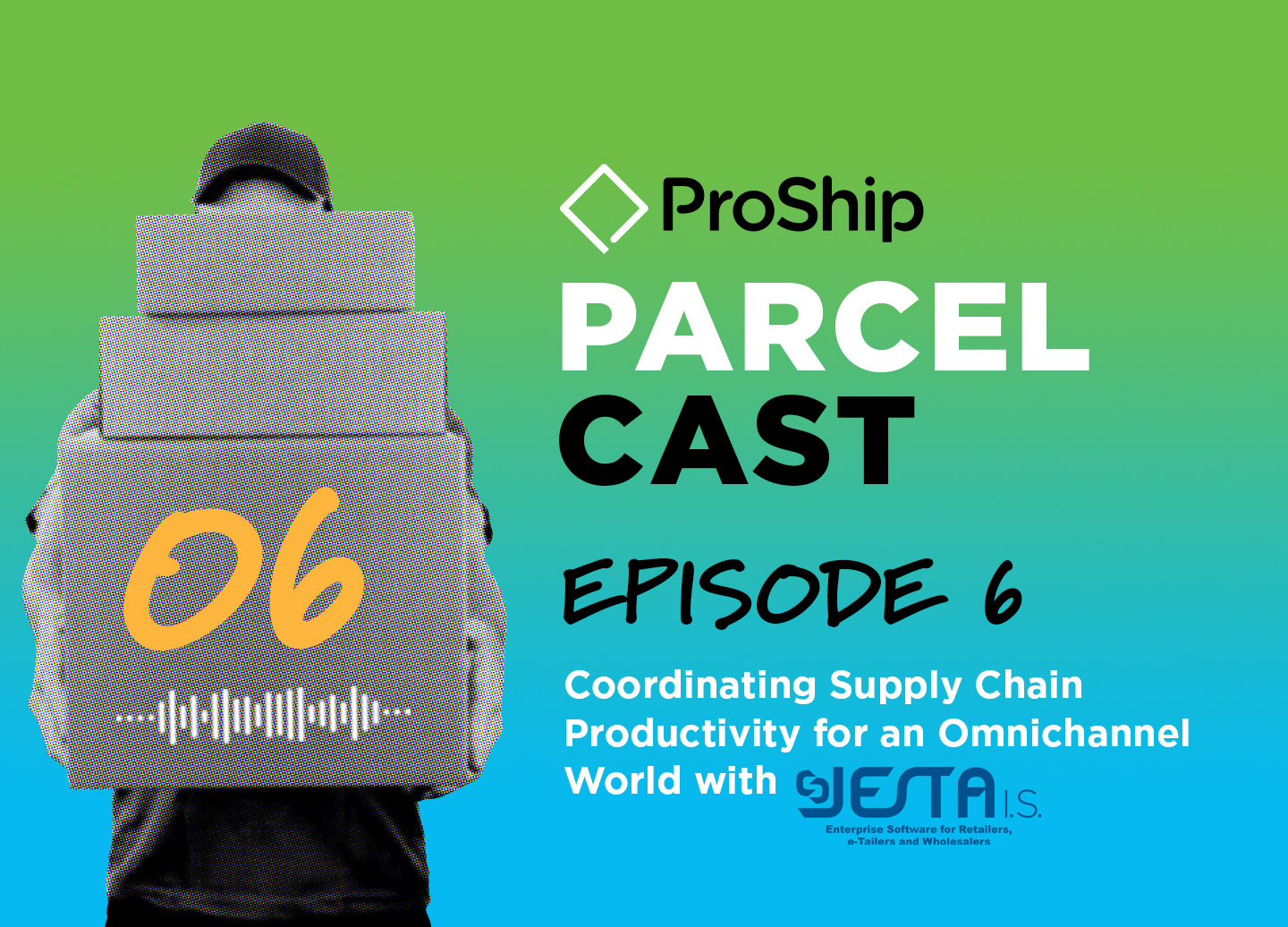Which strategies and technologies will give you a competitive advantage moving forward?
For companies who want to delight their customers in 2020, shipping and fulfillment have taken center stage. Enterprise and mid-market retailers are embracing instant demand from the marketplace for better experiences and lower costs.
But last-mile delivery presents challenges. According to Transportation and Logistics executives, the biggest ones are overall costs at 28%, customer demands at 26%, delivery efficiency at 20%, and consistency at 8%. At the same time, the pandemic has caused U.S. package volume to surge. Parcel shipping is up about 20% for UPS and FedEx and up 50% for the Postal Service in the quarter ending in June compared with the same period a year earlier, causing panic among carriers and shippers alike. The big three parcel carriers have all announced peak season surcharges as a result.
These surcharges are likely to strain companies already operating on tight margins. Retailers, third party logistics companies, and direct-to-consumer (DTC) manufacturers need options. How can you best prepare? Here are the top 5 supply chain investments you should make now to help ensure a strong peak season (and a stronger start to next year).
1. Ship-from-Store Capabilities
Customers want quick delivery (like same-day and next-day) and adding a ship-from-store strategy can optimize a successful omnichannel fulfillment initiative. The first step retailers and manufacturers often take is to transition from bulk shipping from distribution centers to picking and shipping orders individually. But this system isn’t perfect and is often only a stop gap measure. DCs are often out of stock on the products that customers want or offer less selection. Fortunately, there’s a better way.
Ship-from-store is a marriage between e-commerce fulfillment and brick-and-mortar retail locations. The main advantages?
- Adding ship-from-store functionality can bring back purpose to brick-and-mortar store locations, as consumers continually shift to e-commerce shopping
- Retailers can quickly locate inventory, determine the closest location to the customer and move inventory from stores, thus minimizing discounts and decreasing shipping costs.
- Consumers have more delivery choices and can often receive products quicker.
Greater visibility into inventory locations and the ability to cut shipping distance are powerful benefits of ship-from-store strategies. Learn more about “dark stores” and discover some tips in our Ship-from-Store Guide.
2. Fast, Efficient New Carrier Onboarding
High volumes and peak season shipping surcharges mean that shippers need more carrier options with greater visibility and quicker response times. Adding some regional carriers to your mix can be a great alternative. Although some regionals are also implementing peak surcharges, you may still be able to save money and find shorter transit times to customers.
But adding carriers one at a time is tedious and time-consuming, and retailers with home-grown solutions are struggling with switching between shipper’s interfaces in order to compare rates and options. With a good mix of regional and major carriers and the right parcel shipping software that can help you easily onboard new carriers and rate shop them within one interface, you can quickly respond to disruptions and manage pandemic and peak season surcharges every time you print a carrier label.
3. Third-Party Logistics Providers
Supply chains are no longer simply a way to move products from Point A to Point B. Instead, they’ve become demand-driven value networks (DDVN), aka a competitive advantage.
Companies must focus on what they can do best, and if shipping and fulfillment isn’t a strategic differentiation for your business yet or if you’re starting to implement an omnichannel fulfillment approach, it makes sense to bring in a partner. Enter third-party logistics (3PL) providers who handle warehousing, transportation or related activities for you.
3PLs can be an excellent solution to help manage increased e-commerce volume. However, to ensure success, you must make sure that your outsourcing strategy and selection process are aligned with your company’s supply chain and business goals. Decisions based solely on cost can backfire.
In this Gartner analysis, several manufacturers found that quality, supply chain responsiveness, and customer service all suffered in the months and years following outsourcing. They saved money, but the negative impact on customer service and image wasn’t worth the cost.
Make sure that the 3PL provider you choose invests in the right technology that will meet your needs and expectations for integrations, business rules, functionality and expected cost savings.
4. Order Management Technology
If you have more than one inventory source—for example, DCs, retail stores, and 3PLs or manufacturers—then an Order Management System (OMS) will prove invaluable.
Customers have made a consistent and seamless online shopping experiences an expectation. They want to see if items are in stock or available for pickup locally, choose from multiple fast and free delivery options, and track their purchases from the time the order’s placed until it’s in their hands. If they need to make a return, they want the option that’s most convenient—for example, they may order online but prefer to return to their local store.
So how do you manage orders that come in from e-commerce platforms, mobile apps, POS and online marketplaces? What if your stock is spread out between different warehouses, retail locations, or drop-ship vendors? How will you handle customer service, backorders, payments, and returns? That’s the heavy lifting an OMS handles. It can manage incoming orders from multiple systems, direct them to fulfillment and shipping, enable start-to-finish order tracking, and synchronize all that information across the systems and people who need it. Determining the correct place to originate a shipment from, based on inventory availability, can affect the cost of a shipment by a factor of 3 or 4. Having an OMS reference shipping software (mentioned below) provides a critical understanding of the overall cost of meeting a customer expectation from a given origin.
And a good OMS is worth it. Aberdeen Group reports that companies with the strongest omnichannel capabilities retain an average of 89% of their customers, while companies with weaker strategies retain only 33%.
5. Multi-Carrier Parcel Shipping Strategy
A strong multi-carrier parcel shipping solution that seamlessly integrates with your current systems is like a force multiplier when combined with any of the above solutions.
To not only survive but thrive during the coming peak season and throughout the coming year, you need reliability, speed, flexibility, and as many delivery options as possible at your disposal. With multi-carrier parcel shipping software, you can easily find the best delivery method at the lowest cost and print a compliant carrier label seamlessly thanks to automated rate shopping.
You’ll supercharge your OMS by giving your customers the information and delivery options they want, as well as give all your team members and customers visibility into every step of the order process.
The right multi-carrier shipping solutions will also help with…
- Parcel maximum volume concerns
- Addition of new carriers (carrier diversification)
- The impact of carrier updates and new surcharges
- Implementing ship-from-store and other omnichannel fulfillment initiatives
- Business rule changes
Avoid the Risks
The longer you delay making these critical supply chain investments, the more you risk:
- Losing customers due to lack of popular shipping options, higher shipping costs, and missed delivery promises.
- Putting greater strain on your logistics and IT teams because of weak system integrations, compliance issues, manual processes, system downtime and inadequate support.
- Skyrocketing shipping costs that leave even less budget for future installs.
- Rushed implementations, leading to insufficient testing and training before peak season.
- A stressful, disappointing peak season.
Why Invest in Shipping Software Now?
Investments in shipping software offer big paybacks, and no investment will give you an ROI quite like ProShip Multi-Carrier Shipping Software.
- Impress your customers, build brand loyalty, increase sales and turn customers into loyal advocates.
- Outshine your competition with an industry leading mindset.
- Be ready for your best peak season and best next year ever.
Talk to our shipping expert today. Contact Us.

 Back to Blog
Back to Blog






